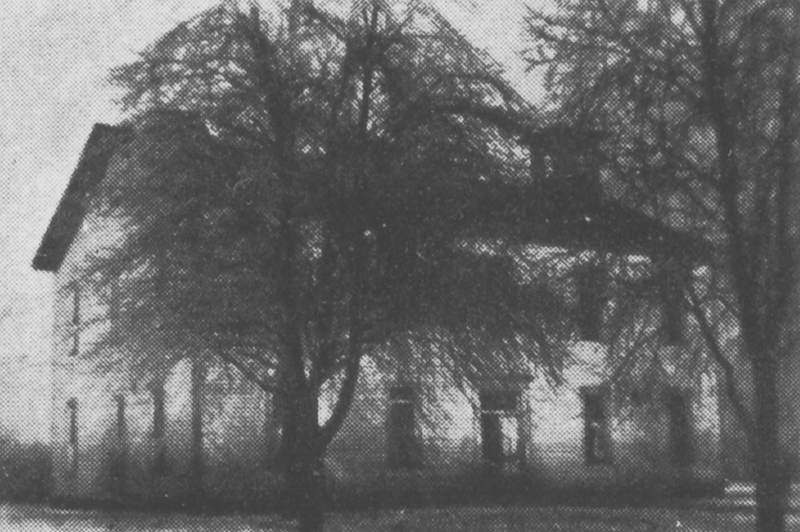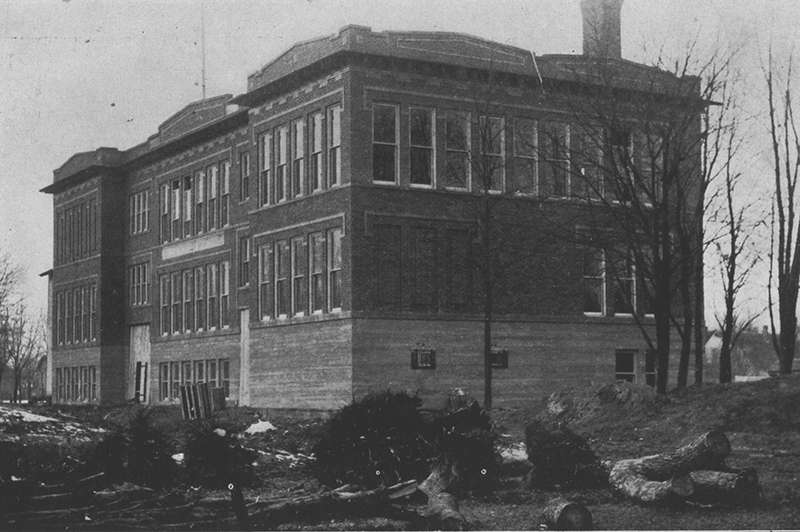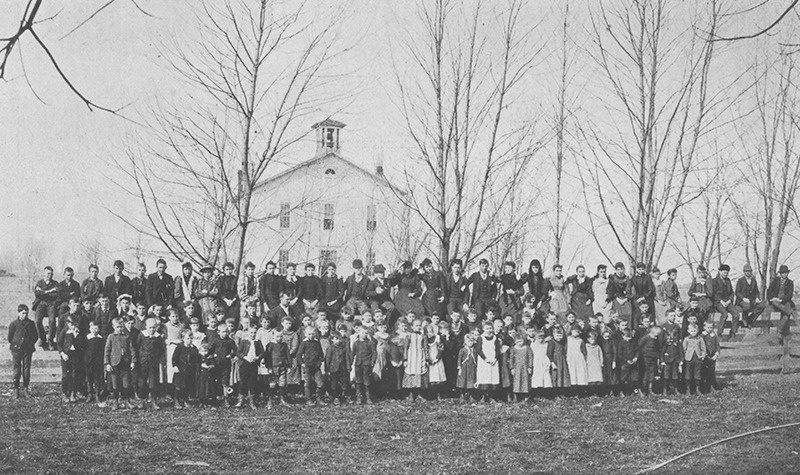
A version of this article first appeared in the Pulaski County Journal in 2012 as part of a series the author wrote entitled “A Curious Historian’s Tales.”
Because of my career as a professor, I was especially interested to learn that in pioneer days there were nascent colleges in Pulaski, White, and Jasper Counties. Down in Farmington, now called Burnettsville, The Farmington Male and Female Seminary was formed in 1852. It was a joint-stock company, meaning that it was intended to be for profit. It operated for a number of years, and according to the Battey history, was quite popular in its day, “receiving pupils from Logansport, La Fayette, Peru, Winamac, Delphi, and nearly all of the cities and towns in this portion of the state.” The roster of alumni included at least one member of Congress, “Hon. Calkins, M.C.” Beyond the substantial paragraph in the 1883 book, I haven’t discovered further information about the school. In Milroy Township, Jasper County, historical records mention the “South American College,” founded in the 1860s, but don’t provide many further details beyond its name and location.
More is known about Pulaski County’s contribution to higher education, described in the Salem Township chapter of the 1883 Battey county history. This enterprise was also organized as a joint-stock company, and the list of names connected to it includes many of Francesville’s prominent early citizens, including J. J. Fairchild, William Imes, C. G. Hartman, J. C. Brewer, Peyton Davisson, Samuel Rishling, J. T. Bledsoe, and Charles Garrigues.

Unlike its White County counterpart, it never opened its doors for its intended purpose. In a substantial section titled The College, we learn, “As the name (Francesville Male and Female College) clearly implies, it was designed to be an institution at which both sexes should be taught; and, if the word ‘college,’ as used in the name of the institution, be of any import, it may be presumed that it was the purpose of those engaged in the enterprise, to make it a school of tolerably high rank. It is quite a fine structure, being sixty feet in length by forty-five feet in width, and two stories in height. The cost of erecting the building was about $4,500.
It was never used for the purpose for which it was designed. It is not a little singular that the enterprise should have been abandoned without even a trial, after it had been advanced to such a stage; but the consideration which prompted them to adopt this course probably was, that they saw, upon more mature deliberation, that it would require a long time and the expenditure of a considerable amount of money to obtain for the institution the celebrity essential to make it self-sustaining even; and that the payment of a dividend upon the shares of stock, if ever made, must necessarily be an event of the dim, distant future.”

Constructed in the 1860s, “On the 5th day of September, 1870, the Directors sold it to S. Rishling, Trustee of Salem Township, for $3,500, $200 of which was paid in cash, and the balance in township bonds, bearing six per cent interest.” The building then began service as Francesville’s schoolhouse until the construction of a large new brick building in 1914. Amongst the yearbooks gifted to me by the heirs of Neil and Marcie (Sanders Burget) Erb of rural Francesville was the very first number of The Francillian yearbook, published in 1914 by The Gorrell and Sons Press of Winamac.
A pair of facing pages early in the book are marked, “Francesville’s Old School Building” and “Francesville’s New School Building,” featuring pictures of each. The old school, the caption reveals, “was erected with a view to establishing an Academy.” This provides evidence that it was indeed the structure originally intended for use as a college.
Submitted by Brian Capouch